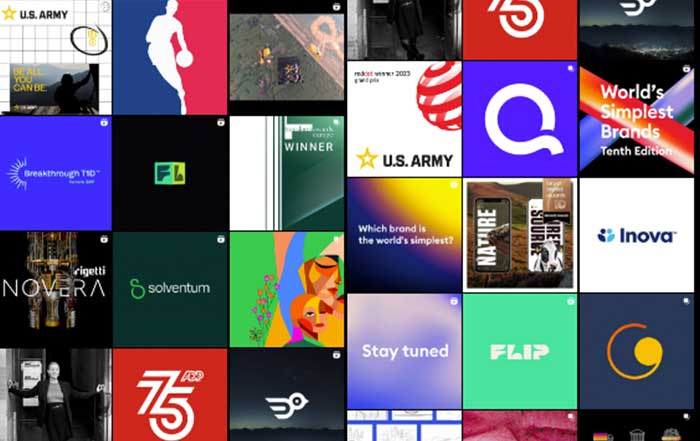In the early 1980s, the world of finance began to witness the first sparks of a revolution that would one day redefine how value, trust, and exchange operate on a global scale. Before Bitcoin, before Ethereum, before the trillion-dollar digital asset economy of 2025, there were scattered experiments in digital currency systems that sought to challenge the inefficiencies of centralized banking. Concepts like David Chaum’s DigiCash in 1989 and B-Money by Wei Dai in the 1990s introduced the idea of cryptographic security for electronic payments. These early attempts, while technologically constrained, laid the theoretical foundation for what would eventually become the global cryptocurrency market.
The turning point arrived in 2008 with the release of a whitepaper titled Bitcoin: A Peer-to-Peer Electronic Cash System by the pseudonymous figure Satoshi Nakamoto. This document proposed a decentralized system of digital money, where transactions could be verified by a network of nodes rather than a centralized authority. By January 2009, the first Bitcoin block — the Genesis Block — was mined, marking the beginning of a new era for finance and technology alike.
Bitcoin’s innovation was not just in its ability to transmit value, but in its mechanism of trustless consensus through blockchain technology. The distributed ledger concept enabled anyone to verify ownership and transfer of digital assets without intermediaries. In a world still reeling from the global financial crisis, this new model of transparency and decentralization resonated deeply with those who had lost faith in traditional financial systems. The philosophy of open access and independence would soon inspire thousands of developers and entrepreneurs to build upon this model.
Learn more about financial evolution and innovation at TradeProfession Banking and TradeProfession Economy.
From Niche Experiment to Global Asset Class
For several years after Bitcoin’s launch, it existed mostly within small online communities, with minimal recognition from the mainstream financial sector. The first Bitcoin transaction involving a real-world purchase occurred in 2010 when a developer famously exchanged 10,000 BTC for two pizzas, unknowingly setting a precedent for digital value. By 2013, cryptocurrency exchanges like Mt. Gox became hubs for Bitcoin trading, but the lack of regulation and security oversight led to massive losses when the platform collapsed in 2014 after a major hack.
Despite the setbacks, the broader idea of decentralized finance persisted and evolved. New cryptocurrencies such as Litecoin, Ripple (XRP), and Ethereum introduced variations on Bitcoin’s concept, offering faster transactions, smart contracts, and enterprise-grade scalability. By the mid-2010s, cryptocurrencies were being discussed in boardrooms, universities, and government circles as serious instruments of innovation rather than fringe experiments.
The rise of Ethereum, launched by Vitalik Buterin in 2015, represented a paradigm shift. It transformed blockchain from a purely transactional ledger to a programmable platform capable of hosting decentralized applications (dApps). This innovation introduced a new layer of utility and attracted industries beyond finance — including logistics, gaming, healthcare, and real estate — each exploring how blockchain could enhance transparency and operational efficiency.
In recent years, with the emergence of Decentralized Finance (DeFi) and Non-Fungible Tokens (NFTs), blockchain technology has permeated creative and economic sectors alike. The integration of AI-driven trading algorithms and machine learning risk assessment models has also strengthened its legitimacy as an investment class, linking traditional finance with emerging digital economies. For deeper insights into technological shifts shaping financial systems, visit TradeProfession Technology and TradeProfession Artificial Intelligence.
The Rise of Cryptocurrency Exchanges and Market Infrastructure
Cryptocurrency’s expansion from concept to global marketplace was made possible by exchanges — digital platforms that allow users to buy, sell, and store crypto assets. These exchanges serve as the bridge between decentralized tokens and traditional fiat currencies. By 2025, the global cryptocurrency exchange market is valued at over $1.3 trillion, reflecting its maturity as a core component of the financial ecosystem.
Early pioneers such as Coinbase, Binance, and Kraken shaped this landscape through user-friendly interfaces and compliance with financial regulations. Coinbase, headquartered in the United States, became the first major exchange to go public in 2021, trading on the NASDAQ and symbolizing mainstream acceptance. Binance, founded by Changpeng Zhao, established itself as the world’s largest exchange by trading volume, offering hundreds of cryptocurrencies and advanced derivatives markets. Meanwhile, Kraken and Gemini, led by the Winklevoss twins, built reputations around trust, transparency, and institutional-grade custody solutions.
These platforms introduced critical features such as cold storage, two-factor authentication, and multi-signature wallets, elevating security standards across the industry. The development of Decentralized Exchanges (DEXs) like Uniswap, SushiSwap, and PancakeSwap further advanced the ecosystem by removing intermediaries altogether. Through smart contracts, users could trade directly from their wallets, maintaining full control of their assets.
The emergence of Stablecoins — digital tokens pegged to fiat currencies — added a layer of stability to a notoriously volatile market. Coins such as Tether (USDT), USD Coin (USDC), and Dai (DAI) became essential tools for liquidity and cross-border payments. Their role has since expanded into remittance systems, microtransactions, and decentralized lending.
To explore more about evolving global investment models, visit TradeProfession Investment and TradeProfession Global.
Cryptocurrency Evolution Timeline
From Early Experiments to Global Financial Revolution
Regulatory Evolution and the Quest for Legitimacy
As cryptocurrencies gained traction, governments and financial authorities worldwide began addressing the challenges of regulation, taxation, and consumer protection. Initially met with skepticism, digital currencies were perceived as potential enablers of money laundering and tax evasion. However, by 2025, the narrative has shifted toward integration and structured oversight rather than outright prohibition.
The United States, through agencies such as the Securities and Exchange Commission (SEC) and the Commodity Futures Trading Commission (CFTC), has implemented frameworks for digital asset classification. The European Union advanced its own Markets in Crypto-Assets (MiCA) regulation to establish uniform standards across member states, promoting transparency while supporting innovation. Meanwhile, countries like Singapore and Switzerland have become regulatory pioneers, offering clear licensing regimes that attract both startups and institutional investors.
In Asia, Japan’s Financial Services Agency (FSA) recognized Bitcoin as legal tender as early as 2017, fostering an environment of trust and security. Similarly, Dubai’s Virtual Assets Regulatory Authority (VARA) has positioned the United Arab Emirates as a leading hub for blockchain innovation. These developments underscore a broader global trend toward responsible adoption rather than rejection.
Learn more about the intersection of policy and finance at TradeProfession Business and TradeProfession Sustainable.
Institutional Investment and the Mainstreaming of Digital Assets
The entrance of institutional capital into cryptocurrency markets marked one of the most significant turning points in the sector’s evolution. Initially driven by retail investors and early adopters, the market began attracting hedge funds, private equity firms, and even pension funds in the late 2010s. By 2025, digital assets have become an integral part of diversified portfolios, with institutions recognizing their potential for both high returns and hedging against inflation.
Major players such as Fidelity Digital Assets, BlackRock, and Goldman Sachs have integrated crypto trading desks and custody services into their offerings, bridging the gap between traditional finance and blockchain technology. BlackRock’s Bitcoin ETF, approved in 2024, became a milestone for institutional legitimacy, allowing mainstream investors exposure to Bitcoin through regulated instruments. Meanwhile, Grayscale Investments continues to lead in providing trust-based exposure to cryptocurrencies, giving investors a gateway to Bitcoin, Ethereum, and newer blockchain projects.
The institutional embrace of crypto was facilitated by advancements in custodial infrastructure, compliance mechanisms, and auditing transparency. Unlike the early days of the unregulated exchange era, custodians now employ multi-party computation (MPC) wallets and insurance-backed storage to protect client assets. These developments have eased concerns regarding volatility and security, enabling the emergence of a robust digital asset management ecosystem.
Another catalyst for institutional adoption has been the growing recognition of Bitcoin as digital gold. Amid geopolitical instability and currency devaluation, institutional portfolios increasingly incorporate Bitcoin and Ethereum as alternative stores of value. As Macroeconomic risk hedging gains importance, the narrative of crypto as a resilient, borderless financial system has only strengthened.
For those exploring deeper insights into market trends and institutional strategies, visit TradeProfession Investment and TradeProfession Stock Exchange.
Technological Innovations Redefining Crypto Exchanges
As the market matured, technological innovation became central to maintaining competitiveness among exchanges. The evolution of Layer 2 solutions and cross-chain interoperability technologies has significantly improved transaction speed, scalability, and cost efficiency. Platforms built on technologies like Polygon, Arbitrum, and Optimism have revolutionized how exchanges process trades, reducing congestion on the Ethereum mainnet and offering near-instant settlements at a fraction of previous costs.
The integration of Artificial Intelligence (AI) and machine learning within exchanges has also elevated performance and user experience. AI-driven analytics platforms now provide predictive insights on market trends, optimize liquidity pools, and detect fraudulent activities in real time. Exchanges such as Binance, Kraken, and Bybit have adopted automated surveillance systems that monitor trading behaviors, flagging suspicious transactions while complying with Know Your Customer (KYC) and Anti-Money Laundering (AML) standards.
Additionally, the emergence of Decentralized Autonomous Organizations (DAOs) has introduced community governance into exchange operations. Instead of centralized boards, DAOs enable stakeholders to vote on protocol updates, fee structures, and development priorities, reflecting a democratic approach to financial infrastructure. Uniswap DAO and Aave DAO have become exemplars of this new model of decentralized management.
Technological convergence is also visible in hybrid exchanges, which blend the liquidity and speed of centralized platforms with the privacy and autonomy of decentralized protocols. This hybrid architecture is particularly appealing to institutional traders seeking transparency without sacrificing compliance.
To explore how technology and automation are shaping modern finance, visit TradeProfession Technology and TradeProfession Artificial Intelligence.
The Expanding Universe of DeFi: Beyond Banking
The concept of Decentralized Finance (DeFi) has grown from a fringe experiment into one of the most transformative trends in the digital economy. In essence, DeFi eliminates traditional intermediaries — such as banks and clearinghouses — by using smart contracts to automate lending, borrowing, and trading. Between 2020 and 2025, the total value locked (TVL) in DeFi platforms grew from a few billion dollars to over $200 billion globally, with ecosystems like Ethereum, Solana, and Avalanche leading the charge.
DeFi’s success lies in its ability to democratize access to financial services. In developing nations across Africa, Southeast Asia, and South America, decentralized platforms are enabling individuals without bank accounts to participate in lending, yield farming, and remittance markets. Startups like Aave, Compound, and MakerDAO have built robust decentralized lending systems, where users can earn interest on deposits or borrow against their crypto assets without the need for credit checks or banking infrastructure.
The integration of Real-World Assets (RWA) into DeFi protocols is another major leap. By tokenizing assets such as real estate, bonds, and commodities, blockchain platforms now enable fractional ownership and liquidity for traditionally illiquid investments. This innovation is revolutionizing wealth management and cross-border investment, providing unprecedented accessibility to global markets.
Moreover, Decentralized Insurance Protocols are addressing the sector’s long-standing vulnerabilities. Platforms such as Nexus Mutual and InsurAce offer coverage for smart contract failures, exchange hacks, and liquidity pool risks — a layer of protection that bridges the gap between innovation and accountability.
To understand more about how decentralized finance aligns with global economic development, visit TradeProfession Global and TradeProfession Economy.
Cryptocurrency’s Influence on Global Economies
Cryptocurrency’s rapid expansion has had profound implications for global economic systems. In regions where traditional banking infrastructure is underdeveloped or overly restrictive, cryptocurrencies have become instruments of financial inclusion. Countries such as Nigeria, Kenya, Vietnam, and Philippines now rank among the world’s top adopters of crypto, according to global blockchain usage indexes. These nations leverage digital assets to facilitate remittances, business payments, and savings, bypassing high transfer fees and currency volatility.
In the United States and Europe, crypto adoption has evolved beyond speculation to institutional integration. Financial services firms are now using blockchain for settlement systems, while government agencies explore Central Bank Digital Currencies (CBDCs) as a state-backed alternative to private cryptocurrencies. The Federal Reserve’s FedNow system and the European Central Bank’s Digital Euro initiative are redefining monetary policy infrastructure by merging the speed of crypto payments with the trust of central regulation.
In Latin America, countries such as El Salvador and Argentina continue to experiment with Bitcoin and stablecoins as inflation-resistant currencies. These use cases, while controversial, reflect a pragmatic response to economic instability. Meanwhile, in Asia, nations like Singapore and Japan have developed thriving regulatory sandboxes to foster innovation in blockchain-based finance.
For businesses, the impact of cryptocurrency extends to supply chain management, cross-border trade, and asset tokenization. Blockchain’s transparency and immutability reduce fraud, improve traceability, and streamline international commerce. Enterprises across logistics, manufacturing, and energy are integrating crypto-based smart contracts to automate global trade workflows.
To explore further how blockchain transforms international commerce, visit TradeProfession Business and TradeProfession Innovation.
Education, Awareness, and the Future Workforce of Crypto
The growth of the cryptocurrency ecosystem has created an urgent demand for education, specialized talent, and professional training. Universities, fintech institutions, and online academies are offering blockchain and crypto-finance courses to prepare the next generation of professionals. Leading academic centers such as MIT, Oxford, and National University of Singapore have launched dedicated programs focused on blockchain engineering, cryptography, and decentralized systems governance.
The rise in crypto employment has opened opportunities across software engineering, financial analysis, marketing, and legal compliance. Global job platforms are reporting exponential growth in blockchain-related roles, particularly in DeFi, NFT marketplaces, and exchange operations. Professionals skilled in smart contract auditing, tokenomics, and regulatory technology (RegTech) are now among the most sought-after experts in the digital economy.
Crypto literacy initiatives are also emerging in collaboration with governments and financial institutions. Organizations such as Coinbase Learn, Binance Academy, and Blockchain Council are equipping individuals with resources to understand security, risk, and taxation in the digital asset space. These educational efforts are vital for empowering consumers, reducing fraud, and promoting responsible participation in the financial revolution.
Learn more about career pathways and evolving employment trends at TradeProfession Education and TradeProfession Jobs.
The Rise of Sustainable Blockchain and Green Crypto Initiatives
As the cryptocurrency industry expanded, one of the most persistent criticisms it faced revolved around environmental sustainability. The energy consumption associated with Proof-of-Work (PoW) mining — particularly for Bitcoin — drew scrutiny from regulators, environmentalists, and policymakers. By 2025, however, the crypto sector has made remarkable progress toward reducing its carbon footprint through innovation, efficiency, and global collaboration.
The transition of Ethereum to a Proof-of-Stake (PoS) consensus mechanism in 2022 became a pivotal milestone, reducing the network’s energy consumption by more than 99%. This shift demonstrated that high-performance blockchain systems could thrive without excessive energy demands. Following Ethereum’s example, several emerging chains such as Cardano, Polkadot, and Solana designed environmentally conscious protocols from inception, prioritizing low-power validation processes.
In parallel, companies and initiatives have begun integrating renewable energy into mining operations. Marathon Digital Holdings, Hive Blockchain Technologies, and Bitfarms have moved toward hydro, wind, and solar-powered facilities, signaling an industry-wide commitment to sustainability. Governments in regions like Iceland, Canada, and Norway, known for abundant renewable energy, have become hubs for green crypto mining.
Additionally, the emergence of Carbon-Neutral Tokens and Blockchain Carbon Offset Platforms represents a growing convergence between crypto innovation and climate responsibility. Projects such as Toucan Protocol and KlimaDAO tokenize carbon credits, allowing companies and individuals to transparently offset emissions through blockchain-based registries. These solutions have redefined how businesses measure and report environmental impact, aligning with global ESG standards.
Sustainability has also become a driver of investor preference. Institutional investors now assess blockchain projects through the lens of Environmental, Social, and Governance (ESG) metrics, aligning capital allocation with responsible innovation. This transformation not only enhances crypto’s reputation but also sets a precedent for how technology and environmental ethics can coexist.
For additional insights into sustainable financial strategies, visit TradeProfession Sustainable and TradeProfession Economy.
Security, Privacy, and the Ongoing Battle for Trust
Despite the success of decentralized systems, cybersecurity remains one of the most critical challenges facing the cryptocurrency ecosystem. The decentralized nature that empowers users also introduces vulnerabilities that malicious actors can exploit. High-profile breaches, such as the Poly Network hack in 2021 and subsequent DeFi exploits, have emphasized the need for more resilient architectures and advanced auditing frameworks.
By 2025, the industry has embraced a multilayered security approach, combining zero-knowledge proofs, multi-signature authentication, and hardware-based wallets to fortify user safety. Exchanges now rely on continuous penetration testing, decentralized insurance protocols, and on-chain monitoring tools to safeguard assets. Leading cybersecurity firms like Chainalysis, Elliptic, and CipherTrace provide real-time analytics that track and trace illicit crypto flows, helping exchanges comply with Anti-Money Laundering (AML) standards and government regulations.
Privacy-enhancing technologies have also evolved significantly. Cryptocurrencies such as Monero (XMR) and Zcash (ZEC) pioneered the concept of confidential transactions, while emerging zero-knowledge systems — like zk-SNARKs and zk-Rollups — are now being integrated into mainstream platforms to balance anonymity with regulatory compliance. This has enabled a new category of hybrid privacy models where transactions remain auditable without revealing user identities.
Regulatory cooperation between law enforcement and blockchain developers is also advancing global trust. Cross-border agencies are now equipped with blockchain forensic tools that trace the provenance of digital assets, ensuring accountability while respecting privacy. The interplay between innovation and oversight defines the modern security paradigm — one that seeks equilibrium between freedom and safety.
To understand more about trust and transparency in modern finance, visit TradeProfession Executive and TradeProfession Business.
Cross-Border Collaboration and the Evolution of Global Finance
The borderless nature of cryptocurrency has forced nations and financial institutions to rethink traditional monetary systems. As cross-border trade and digital payments continue to expand, blockchain’s ability to facilitate instant, low-cost international transfers has become indispensable. By 2025, several multinational collaborations have emerged to standardize digital asset frameworks and settlement systems.
One of the most notable advancements has been the rise of Central Bank Digital Currencies (CBDCs). Over 130 countries are now exploring or piloting CBDCs, each seeking to combine the efficiency of blockchain with the stability of sovereign backing. The Digital Yuan (e-CNY) in China and Project Dunbar, a cross-border CBDC collaboration involving Singapore, Australia, and South Africa, have set examples for interoperable systems that simplify global trade.
In parallel, private-sector initiatives are leading innovation in cross-border finance. Ripple Labs, through its RippleNet and On-Demand Liquidity (ODL) solutions, has revolutionized remittance systems by enabling near-instant international payments using XRP as a bridge currency. Financial technology firms like Revolut, Wise, and Payoneer have integrated blockchain into their infrastructure, reducing foreign exchange friction for individuals and enterprises alike.
Furthermore, the collaboration between Visa, Mastercard, and blockchain networks demonstrates how legacy payment giants are embracing digital transformation. Both companies have launched crypto-linked cards and settlement systems that allow customers to spend digital currencies seamlessly in fiat ecosystems. The integration of these systems into mainstream financial pipelines signifies that the global financial order is evolving into a multi-asset digital economy.
For deeper analysis of financial transformation across borders, explore TradeProfession Global and TradeProfession Investment.
The Future of Cryptocurrency Beyond 2030
As the cryptocurrency landscape continues to mature, the question now is not whether digital assets will persist, but how they will evolve. By 2030, analysts anticipate a world where blockchain infrastructure becomes as ubiquitous as the internet itself, powering not just finance but every aspect of digital interaction — from identity verification and data storage to governance and cultural exchange.
The next generation of cryptocurrencies will likely be interoperable, quantum-resistant, and AI-assisted. With quantum computing on the horizon, blockchain developers are already exploring post-quantum encryption algorithms to protect against future cyber threats. Similarly, AI-integrated smart contracts are expected to autonomously optimize financial strategies, execute agreements, and manage portfolios based on real-time analytics.
Moreover, the convergence of Web3 technologies, metaverse economies, and digital identity systems will redefine ownership and value. Virtual worlds such as Decentraland, The Sandbox, and Otherside are already showcasing how crypto assets can fuel immersive economies where users own and trade virtual land, fashion, and experiences. This blending of digital and physical economies will be the hallmark of the next decade’s innovation.
Philanthropy and social impact will also gain prominence within the crypto ecosystem. Blockchain’s transparency offers a framework for global donations and humanitarian aid, ensuring accountability and eliminating corruption. From funding environmental restoration projects to providing microloans for small entrepreneurs in developing nations, cryptocurrency’s reach will extend beyond wealth creation to global equity and empowerment.
As the world moves toward an integrated digital economy, the line between crypto and traditional finance will blur. Governments, corporations, and individuals will operate within a hybrid ecosystem that values both decentralization and regulation. Trust will be established through code, transparency will replace bureaucracy, and inclusion will replace exclusivity.
For ongoing coverage of innovation, investment, and economic transformation, visit TradeProfession News and TradeProfession Innovation.
Conclusion: A Legacy of Transformation and the Road Ahead
The story of cryptocurrency is a testament to humanity’s enduring pursuit of freedom, innovation, and economic fairness. What began as a niche experiment driven by cypherpunks has evolved into a multi-trillion-dollar global industry reshaping the pillars of commerce, technology, and governance. From the invention of Bitcoin to the rise of decentralized finance, from the integration of AI to the pursuit of sustainability, every chapter reflects the relentless momentum of progress.
In 2025, cryptocurrency stands at a crossroads — balancing regulation and autonomy, scalability and sustainability, privacy and transparency. It represents not just a financial instrument but a cultural revolution — one that empowers individuals to take control of their wealth, data, and digital destiny.
As new innovations continue to unfold, the crypto economy will likely become an inseparable part of global infrastructure, fostering inclusion, resilience, and opportunity for generations to come.
The world’s fascination with cryptocurrency is far from over; in fact, it is just beginning. For the readers of TradeProfession.com, this evolution offers both insight and opportunity — a chance to understand how technology and finance, when united by innovation, can transform societies and redefine the very meaning of value in a connected world.










